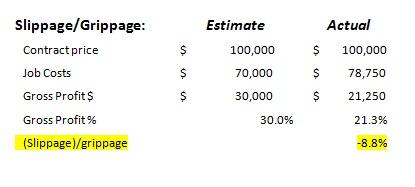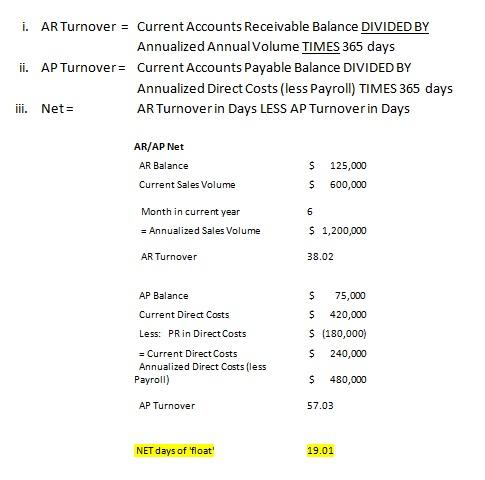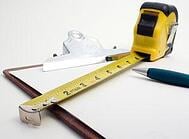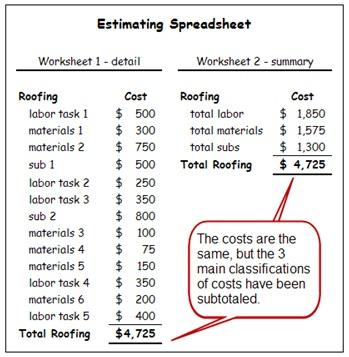
Guest Blogger: Mark Brown is a student at BYU-Idaho where he studies Construction Management. He currently lives in Spokane, WA, working as a carpenter and studying online while his wife finishes her Bachelor’s degree in nursing. This article is a shortened version of an essay titled “Is Generation Y learning how to learn?” written by Mark for a research writing class. It has been revised to help contractors working with Gen Y employees.
Advice For Contractors On How To Work With Generation Y From One Of Them
 “Things just aren’t the way they used to be” is a lament often heard from aging generations. However nostalgic and skeptical this observation may be, it is definitely true. Generation Y (those born between 1980 and 2000) is growing up in a world completely different than their parents. Today we are surrounded throughout our waking hours by new technologies and devices that feed us steady and seemingly infinite flows of information, providing us with instant connection to knowledge that used to be much more difficult to acquire. Obviously, things are not the way they used to be. One can’t help but wonder; how do these changes affect our daily lives? The way we work? Our relationships with others? The way we see ourselves? How we learn?
“Things just aren’t the way they used to be” is a lament often heard from aging generations. However nostalgic and skeptical this observation may be, it is definitely true. Generation Y (those born between 1980 and 2000) is growing up in a world completely different than their parents. Today we are surrounded throughout our waking hours by new technologies and devices that feed us steady and seemingly infinite flows of information, providing us with instant connection to knowledge that used to be much more difficult to acquire. Obviously, things are not the way they used to be. One can’t help but wonder; how do these changes affect our daily lives? The way we work? Our relationships with others? The way we see ourselves? How we learn?
Contractors today face an especially daunting task trying to teach the business to a generation that learns completely different than the average hard-knocks PhD. Understanding these differences is essential to utilizing the huge talent Gen Y possesses and snuffing your own doubts of any hope for the future.
The way Gen Y learns is fundamentally different than their parents.

They process information about ten times faster, they expect free and instant access to all this information, and they wonder what everyone else thinks about it all. Most have grown up learning on a computer from the time they were in grade school. Google is their main professor and they’ve learned to research as fast and efficient as possible. Capitalize on this. Gen Y can sail through tasks you find yourself poring over for hours like learning new scheduling software, Google Sketchup, or computer networking. They love to share what they’ve learned and can help you learn faster.
They can learn fast and perform consistently
Like a Southern California piece-work carpenter, Gen Y loves to have their work lined out and ready to tackle. This may be frustrating to those who value someone who can see what needs to be done and figure out how to do it, but think of the value of someone who can learn fast and perform consistently. Gen Y is also extremely adaptable, so they can learn how to be the leader who takes charge. They just need a better reason than, “Because that’s how it’s done you idiot!”
Can, will you give them what they want?
 Gen Y has often been accused of wanting everything right now that their parents spent 25 years earning. However fair the accusation may be, it definitely reveals something about Gen Y. You’ll be hard pressed to find a more ambitious bunch. If they know that you can give them something they really want, they will follow whatever path you draw for them to get it. You can build them in ways that you never could with a burnt out 50 year old carpenter who’s been swinging a hammer the same way since he was 18.
Gen Y has often been accused of wanting everything right now that their parents spent 25 years earning. However fair the accusation may be, it definitely reveals something about Gen Y. You’ll be hard pressed to find a more ambitious bunch. If they know that you can give them something they really want, they will follow whatever path you draw for them to get it. You can build them in ways that you never could with a burnt out 50 year old carpenter who’s been swinging a hammer the same way since he was 18.
The construction industry has seen some dismal days as of lately and those who have spent nearly a lifetime in it may not wish others the same. But, I hope they can see the promise that exists in the younger generation and take some time to be coaches and mentors to those who are ready and more than capable of taking the industry to the next level.



 Reading can be a powerful tool to help grow your remodeling business. However, reading is of little benefit when it is done casually. Casual reading works fine for the news, novels, and entertainment. But with business, casual reading isn’t enough because it brings only casual results. As contractors, we need great results with measurable change. If you haven’t been getting that from your reading, then perhaps it’s time for a reading pathway.
Reading can be a powerful tool to help grow your remodeling business. However, reading is of little benefit when it is done casually. Casual reading works fine for the news, novels, and entertainment. But with business, casual reading isn’t enough because it brings only casual results. As contractors, we need great results with measurable change. If you haven’t been getting that from your reading, then perhaps it’s time for a reading pathway. Read wisely – Identify industry movers and shakers, ask for their referrals and check online book reviews. Starting with the right book ensures you are getting the best answers and insights. It will save you time and money.
Read wisely – Identify industry movers and shakers, ask for their referrals and check online book reviews. Starting with the right book ensures you are getting the best answers and insights. It will save you time and money. Notate – Use 1, 2 or 3 stars for anything you MUST remember or implement. Highlight key concepts and paragraphs. Underline key industry words, phrases and clauses.
Notate – Use 1, 2 or 3 stars for anything you MUST remember or implement. Highlight key concepts and paragraphs. Underline key industry words, phrases and clauses. Begin using the underlined words immediately. It will increase your communication and professionalism.
Begin using the underlined words immediately. It will increase your communication and professionalism. 
 Over the years, I have heard from many contractors — some of them with very big companies — about how they handle drafting their business contracts. Many times, these documents consist of a collection of "stuff some guys I know have in their contracts" cobbled together. It doesn't even occur to these business owners that laws vary by state, or that they might need an expert to customize contracts to fit their own business's unique needs. By not having a professional create legal documents that fit a clear sales procedure and overall company goals, they are putting their company at serious risk. I know because we learned the hard way, too.
Over the years, I have heard from many contractors — some of them with very big companies — about how they handle drafting their business contracts. Many times, these documents consist of a collection of "stuff some guys I know have in their contracts" cobbled together. It doesn't even occur to these business owners that laws vary by state, or that they might need an expert to customize contracts to fit their own business's unique needs. By not having a professional create legal documents that fit a clear sales procedure and overall company goals, they are putting their company at serious risk. I know because we learned the hard way, too.  In 1998, we incorporated as Myers Constructs, Inc., because we had taken on a huge and complicated renovations project. We knew we needed serious business structures in place to protect us, so in 2001 we asked Dana Priesing, an attorney who is now our office manager, to read our contracts to look for problems. (She had us sign a contract before she did so!) Dana interviewed Tamara to better understand how she sells, and how our customers buy, and then gave us a few recommendations right off the bat:
In 1998, we incorporated as Myers Constructs, Inc., because we had taken on a huge and complicated renovations project. We knew we needed serious business structures in place to protect us, so in 2001 we asked Dana Priesing, an attorney who is now our office manager, to read our contracts to look for problems. (She had us sign a contract before she did so!) Dana interviewed Tamara to better understand how she sells, and how our customers buy, and then gave us a few recommendations right off the bat:




 I know there may be some
I know there may be some 

 Hydroelectric energy is one of the most developed forms of green energy across the country. For generations, American engineers have been developing dams for many of our nation’s rivers. Once a river has been dammed, engineers can control how much water passes through at any given time. As that water flows, it rotates a series of turbines thus creating energy.
Hydroelectric energy is one of the most developed forms of green energy across the country. For generations, American engineers have been developing dams for many of our nation’s rivers. Once a river has been dammed, engineers can control how much water passes through at any given time. As that water flows, it rotates a series of turbines thus creating energy. In order to turn wind into electricity, a new type of windmill has been developed. Often these windmills are installed in large groups referred to as wind farms. All throughout West Texas, there are thousands of new windmills that have been built over the past decade, and wind-generated power is becoming an increasingly substantial source of energy for the Texas grid.
In order to turn wind into electricity, a new type of windmill has been developed. Often these windmills are installed in large groups referred to as wind farms. All throughout West Texas, there are thousands of new windmills that have been built over the past decade, and wind-generated power is becoming an increasingly substantial source of energy for the Texas grid. Harnessing the energy of the sun’s rays requires the use of solar panel technology. While solar panels were once extremely pricey, prices have come down as technology has advanced. Now, many people in sunny regions, including many areas of Texas, are installing their own personal solar arrays in order to capitalize on the most abundant energy resource in our solar system.
Harnessing the energy of the sun’s rays requires the use of solar panel technology. While solar panels were once extremely pricey, prices have come down as technology has advanced. Now, many people in sunny regions, including many areas of Texas, are installing their own personal solar arrays in order to capitalize on the most abundant energy resource in our solar system.

 1: Slippage/Grippage: this metric calculates the difference between your estimated gross profit and the produced gross profit.
1: Slippage/Grippage: this metric calculates the difference between your estimated gross profit and the produced gross profit.
 2: AR/AP Turnover Net: this metric calculates the difference between the number of days it takes to RECEIVE your cash from customer’s invoices (AR Turnover) and to PAY your customer’s expenses (AP Turnover).
2: AR/AP Turnover Net: this metric calculates the difference between the number of days it takes to RECEIVE your cash from customer’s invoices (AR Turnover) and to PAY your customer’s expenses (AP Turnover).


 Contractors who try to job cost inside QuickBooks at the level of 2x6’s and specific products (Kohler faucet K-13490-CP) produce three problems:
Contractors who try to job cost inside QuickBooks at the level of 2x6’s and specific products (Kohler faucet K-13490-CP) produce three problems: Contractors who continually add job-specific line items in QuickBooks invoices (ex: “repair Jones front porch step”, “Replace damaged shower tile”, “Add backsplash”) produce these two problems:
Contractors who continually add job-specific line items in QuickBooks invoices (ex: “repair Jones front porch step”, “Replace damaged shower tile”, “Add backsplash”) produce these two problems:
 Guest Blogger: Spencer Powell, Inbound Marketing Director at TMR Direct. Spencer joined
Guest Blogger: Spencer Powell, Inbound Marketing Director at TMR Direct. Spencer joined 
 In addition to becoming a trusted advisor, the more content you create on your website, the more chances you have to actually get found in search engines like Google. Google LOVES content, so the more you create, the more you'll be found. Just think of your website like a planet. The more pages and articles you create, the bigger the planet gets, and the more gravitational pull it has. So, you'll be pulling in more web visitors.
In addition to becoming a trusted advisor, the more content you create on your website, the more chances you have to actually get found in search engines like Google. Google LOVES content, so the more you create, the more you'll be found. Just think of your website like a planet. The more pages and articles you create, the bigger the planet gets, and the more gravitational pull it has. So, you'll be pulling in more web visitors.  Now you're in great position to solidify your company as one of their options for helping them achieve their goal. This is where lead nurturing comes into play. Lead nurturing is simply sending out helpful emails with more information that helps your prospect do research. These emails allow you to stay in touch with the prospect all the way through the sales cycle. How to execute a lead nurturing campaign is the topic for another post, but are you starting to see how your website can really get you involved in the homeowner sales cycle?
Now you're in great position to solidify your company as one of their options for helping them achieve their goal. This is where lead nurturing comes into play. Lead nurturing is simply sending out helpful emails with more information that helps your prospect do research. These emails allow you to stay in touch with the prospect all the way through the sales cycle. How to execute a lead nurturing campaign is the topic for another post, but are you starting to see how your website can really get you involved in the homeowner sales cycle?
 My suggestion to design/build firms is to have a decorator either on staff or one you’ve built a good relationship with available to you, that is willing to work in conjunction with the designer and/or contractor as far as the pretty aspect of such things as tile lay-out, mirror and sconce placement goes. This is where creating a team comes into play. When all parties are able to communicate clearly with one another and work together everyone wins. That’s the whole point - everyone does what they’re good at, has a good time and works together so more business is forth-coming.
My suggestion to design/build firms is to have a decorator either on staff or one you’ve built a good relationship with available to you, that is willing to work in conjunction with the designer and/or contractor as far as the pretty aspect of such things as tile lay-out, mirror and sconce placement goes. This is where creating a team comes into play. When all parties are able to communicate clearly with one another and work together everyone wins. That’s the whole point - everyone does what they’re good at, has a good time and works together so more business is forth-coming.
 I find it is quite challenging when working with a designer/architect who isn’t part of the contractor’s team and, really, isn’t necessarily on the homeowner’s team either. It’s not that they’re against either of those entities but if they’re working individually they’re about creating a plan for a job and they are simply not always up on the cost impact of possible changes/designs they’re suggesting. OR, they give a very low-ball cost and then the homeowner is blown away when the contractor costs it out accordingly. I suggest homeowners work with a firm that is going to have all of their team members on the same page, at the same time, in the same place.
I find it is quite challenging when working with a designer/architect who isn’t part of the contractor’s team and, really, isn’t necessarily on the homeowner’s team either. It’s not that they’re against either of those entities but if they’re working individually they’re about creating a plan for a job and they are simply not always up on the cost impact of possible changes/designs they’re suggesting. OR, they give a very low-ball cost and then the homeowner is blown away when the contractor costs it out accordingly. I suggest homeowners work with a firm that is going to have all of their team members on the same page, at the same time, in the same place.  I’ve worked with designers who charge $3,000 for a bathroom design including tile lay-out and then want me to make the decisions about the actual lay-out, correct measurements, etc. They were charging money for something they really weren’t that knowledgeable about and didn’t feel confident in. When it’s a design/build firm that’s all inclusive, when one member of the team completes the initial design, the person actually drawing plans steps in and it progresses from there in an orderly fashion.
I’ve worked with designers who charge $3,000 for a bathroom design including tile lay-out and then want me to make the decisions about the actual lay-out, correct measurements, etc. They were charging money for something they really weren’t that knowledgeable about and didn’t feel confident in. When it’s a design/build firm that’s all inclusive, when one member of the team completes the initial design, the person actually drawing plans steps in and it progresses from there in an orderly fashion.





